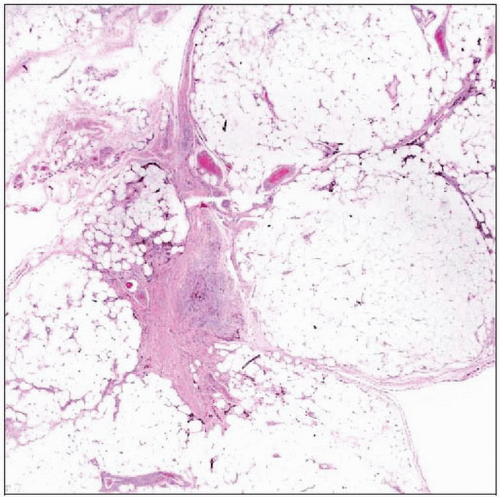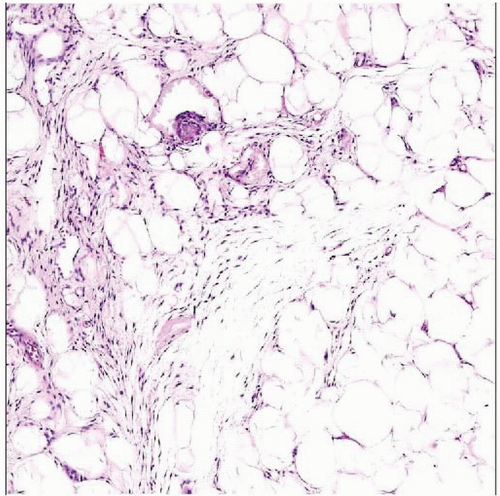Hemosiderotic Fibrohistiocytic Lipomatous Lesion
Julie C. Fanburg-Smith, MD
Aaron Auerbach, MD
HEMOSIDEROTIC FIBROHISTIOCYTIC LIPOMATOUS LESION
Terminology
Benign, probably reactive, lesion that occurs in ankle region of adult females, usually secondary to illfitting shoes or other trauma
Composed predominantly of fat with septal spindled, inflammatory, and hemosiderin changes
Clinical Issues
Ankle
Middle-aged females
Microscopic Pathology
Subcutaneous
Lobules of fat with homogeneous adipocytes
Predominantly septal spindled change
Plump but no significant pleomorphism
Occasionally floret or osteoclast giant cells
No mitotic activity
Inflammation including xanthoma cells, plasma cells, mast cells
 Hemosiderotic fibrohistiocytic lipomatous lesion (HFLL) is composed largely of homogeneous fat with septal proliferations. It is not a mass-like lesion. |
TERMINOLOGY
Abbreviations
Hemosiderotic fibrohistiocytic lipomatous lesion (HFLL)
Synonyms
Hemosiderotic fibrolipomatous tumor is separate entity from pleomorphic hyalinizing angiectatic tumor (PHAT)
Definitions
Benign, probably reactive, lesion that occurs in ankle region of adult women
Usually secondary to ill-fitting shoes or other trauma
Composed predominantly of fat with septal spindled, inflammatory, and hemosiderin changes
ETIOLOGY/PATHOGENESIS
Typical Cause
Trauma or ill-fitting shoes
CLINICAL ISSUES
Epidemiology
Incidence
Rare
Less than 0.2% (10/5,666 benign lipomatous tumors)
Age




